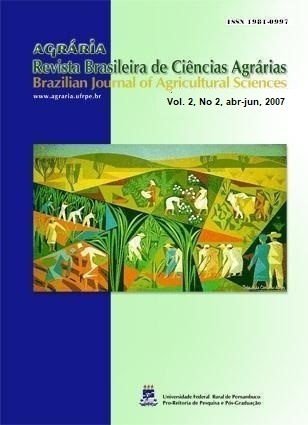Losses of organic carbon, potassium and soil in a Fluvic Neosol under different management techniques in the semi-arid
DOI:
https://doi.org/10.5039/agraria.v2i2a758Keywords:
nutrient losses, runoff, crop coverAbstract
Nutrient loss through sediments from outwash not only represents an economical impact for the farmer, but also an environmental impact factor. The aim of this work was to quantify organic carbon and potassium losses in the sediments from water erosion and verify their relationships to soil losses. Distinct management techniques natural cover and bare soil, in the “caatinga” biome, in the semi-arid zone, have been considered. Artificial rainfall was applied with 60 mm h-1 intensity to the following treatments: Leveled cropping (N) with stone barriers between every two consecutive cropping rows; hillslope cropping (MA); leveled cropping with mulching (CM), using bean straw; bare soil plots (D) and natural cover (CN). Bean (Phaseolus vulgaris L.) crop was utilized. The organic carbon contents were linearly and positively correlated to soil losses rates in the treatments, presenting high determination coefficient. Both organic carbon and potassium losses have been higher in the non-conservative practices pointing out the importance of such techniques towards an agricultural production increase.



